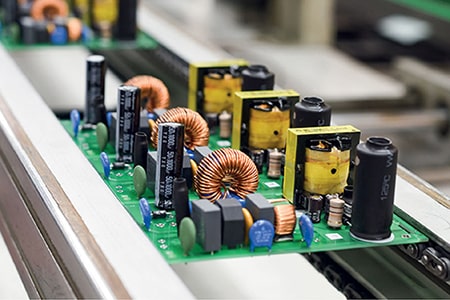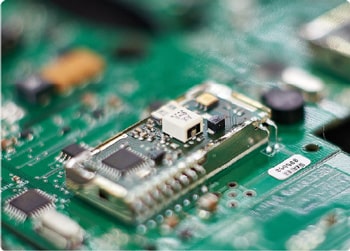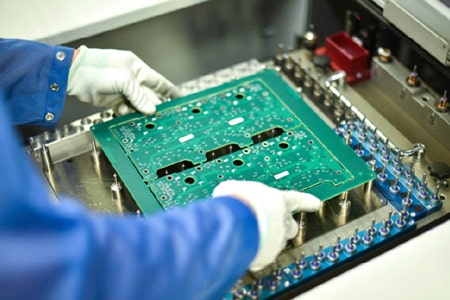What is the impact of SMT processing wave soldering on BGA?
In order to avoid the problem of BGA solder joints on the front of the circuit board, the SMT chip processing manufacturers should not exceed 150°C during tin/lead wave soldering, and should not exceed 190°C for lead-free alloy wave soldering.
Influence of wave soldering of SMT chip processing on front BGA
The common PCB assembly sequence of printed board hybrid technology in the production of SMT chip processing plants is first to reflow the surface mount package on the front of the circuit board, and then to wave solder the through-hole package (inserted from the front). For double-sided boards, surface mount components on the reverse side are typically mounted before components on the front side, and they are held in place by reflow soldering or dispensing. If the reverse side components are not fixed by dispensing, they should be separated from the wave crest by the wave soldering carrier. During the wave soldering process of smt processing, the surface mount components that have been reflowed on the front of the circuit board will also be heated. This heating causes the solder joints of these components to melt when the temperature is raised close to the liquidus point of the solder alloy. Therefore, care should be taken to prevent the solder joint temperature of these components from reaching the liquidus temperature during SMT chip processing.
Effects of front-side reflow BGA solder joints require special attention because their solder joints are under stress during the wave soldering process. If these solder joints reach the liquidus temperature (183°C for eutectic tin/lead solder composition; 217°C for SAC alloy), there will be dewetting or dewetting of the solder joints due to the thermomechanical strain caused by the heating process. Potential risk of board/package substrate detachment. Because solder is extremely soft, even at temperatures close to liquidus, there is a risk of cold soldering, dewetting, or solder ball deformation when the temperature does not reach the solidus.
In order to avoid the problem of BGA solder joints on the front of the circuit board, the SMT chip processing manufacturers should not exceed 150°C during tin/lead wave soldering, and should not exceed 190°C for lead-free alloy wave soldering. This is lower than the maximum temperature allowed for fine-pitch leaded components such as plastic-encapsulated QFPs. SMT turnkey PCB assembly placement To determine the various methods of maintaining temperatures below 150°C (190°C for lead-free), it is best to first identify the various ways in which BGA solder joints can be heated during the wave soldering process.
The above is today's sharing, if you want to know more, you can click our online customer service consultation!






